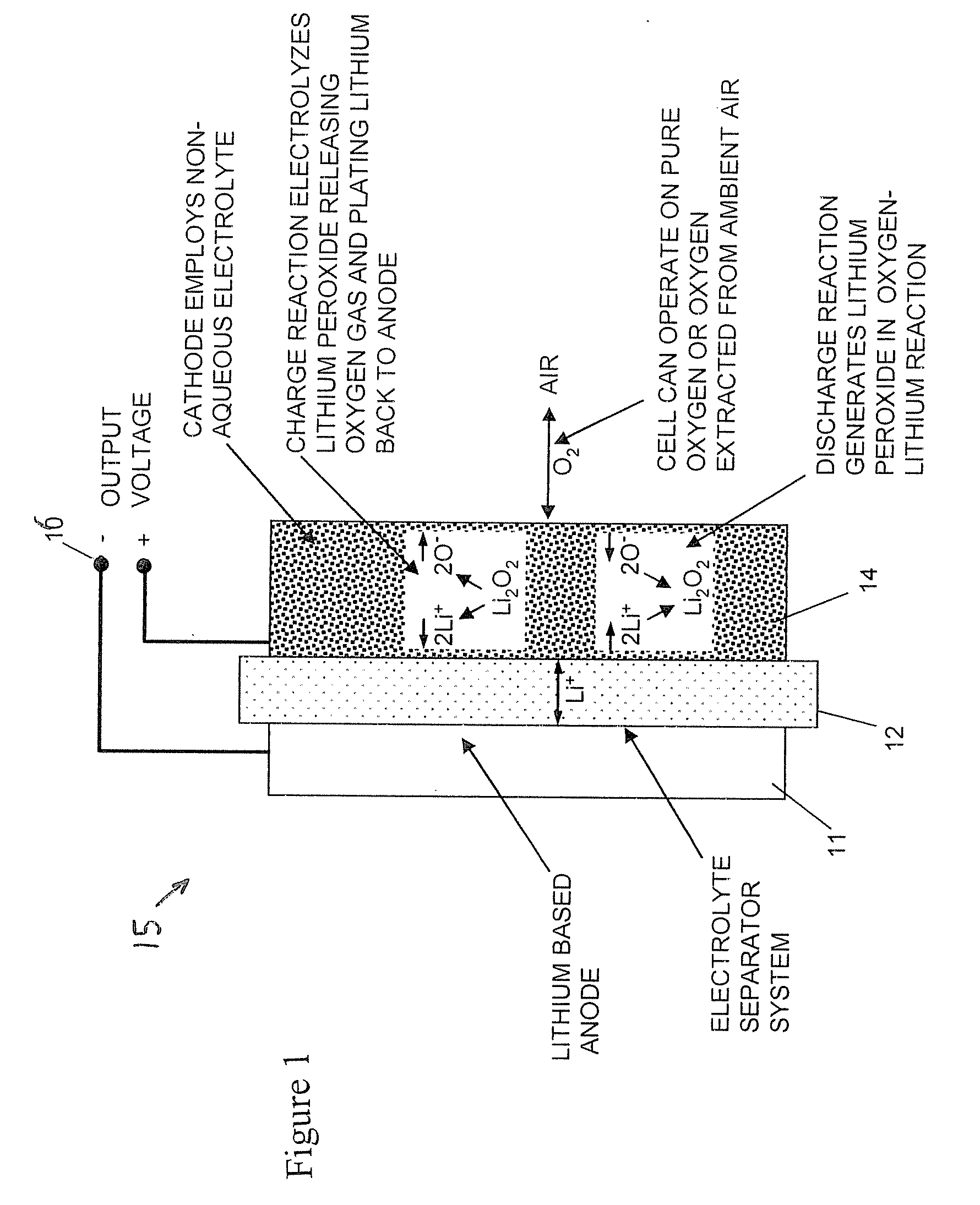Oxygen battery system
a battery system and oxygen battery technology, applied in the field of oxygen battery systems, can solve the problems of high current generation, possible fire, and severe safety problems of batteries using metallic lithium anodes
- Summary
- Abstract
- Description
- Claims
- Application Information
AI Technical Summary
Problems solved by technology
Method used
Image
Examples
Embodiment Construction
[0013]With reference next to the drawings, there is shown a lithium oxygen cell system 10 in a preferred form of the invention. The lithium oxygen cell system 10 includes a lithium oxygen electrochemical cell, lithium oxygen battery cell or lithium air cell 15 (these terms used interchangeably herein) constructed using carbon (carbon black based cathodes (with or without an added oxygen dissociation-promoting catalyst such as manganese dioxide) dispersed within a polymeric binder material and incorporating a metal screen as the conductive element. Maximum specific energy storage capacity is achieved with the use of lithium metal as an anode; however, graphite lithium intercalation anodes can be used to form lithium ion air cells using an appropriate separator design.
[0014]As best shown in FIG. 1, the lithium air cell 15 includes a lithium anode 11, an electrolyte separator 12, an air cathode 14 and battery terminals 16. Lithium-air cells or batteries produce electricity by electroch...
PUM
| Property | Measurement | Unit |
|---|---|---|
| volatile | aaaaa | aaaaa |
| chemical reaction potential | aaaaa | aaaaa |
| metallic | aaaaa | aaaaa |
Abstract
Description
Claims
Application Information
 Login to View More
Login to View More - R&D
- Intellectual Property
- Life Sciences
- Materials
- Tech Scout
- Unparalleled Data Quality
- Higher Quality Content
- 60% Fewer Hallucinations
Browse by: Latest US Patents, China's latest patents, Technical Efficacy Thesaurus, Application Domain, Technology Topic, Popular Technical Reports.
© 2025 PatSnap. All rights reserved.Legal|Privacy policy|Modern Slavery Act Transparency Statement|Sitemap|About US| Contact US: help@patsnap.com



